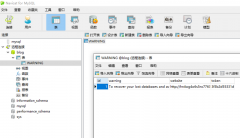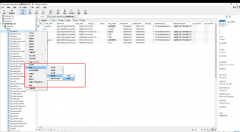python笔记:mysql、redis操作方法
时间:2023-12-07Python笔记:MySQL、Redis操作方法
MySQL的常用模块
在Python3中使用MySQL,需要先安装pymysql模块,可以使用以下命令进行安装:
pip3 install pymysql
需要连接数据库时,可以使用以下代码:
import pymysql
# 打开数据库连接
db = pymysql.connect(host='localhost', user='root', password='password', database='test', charset='utf8')
# 使用 cursor() 方法创建一个游标对象 cursor
cursor = db.cursor()
# 使用 execute() 方法执行 SQL 查询
cursor.execute("SELECT VERSION()")
# 使用 fetchone() 方法获取单条数据.
data = cursor.fetchone()
print("Database version : %s " % data)
# 关闭数据库连接
db.close()
插入数据
使用以下代码可以向MySQL数据库中插入数据:
import pymysql
# 打开数据库连接
db = pymysql.connect(host='localhost', user='root', password='password', database='test', charset='utf8')
# 使用 cursor() 方法创建一个游标对象 cursor
cursor = db.cursor()
# SQL 插入语句
sql = "INSERT INTO EMPLOYEE(FIRST_NAME,\
LAST_NAME, AGE, SEX, INCOME) \
VALUES ('%s', '%s', '%d', '%c', '%d' )" % \
('Mac', 'Mohan', 20, 'M', 2000)
try:
# 执行sql语句
cursor.execute(sql)
# 提交到数据库执行
db.commit()
except:
# 如果发生错误则回滚
db.rollback()
# 关闭数据库连接
db.close()
查询数据
使用以下代码可以从MySQL数据库中查询数据:
import pymysql
# 打开数据库连接
db = pymysql.connect(host='localhost', user='root', password='password', database='test', charset='utf8')
# 使用 cursor() 方法创建一个游标对象 cursor
cursor = db.cursor()
# SQL 查询语句
sql = "SELECT * FROM EMPLOYEE \
WHERE INCOME > '%d'" % (1000)
try:
# 执行SQL语句
cursor.execute(sql)
# 获取所有记录列表
results = cursor.fetchall()
for row in results:
fname = row[0]
lname = row[1]
age = row[2]
sex = row[3]
income = row[4]
# 打印结果
print("fname=%s,lname=%s,age=%d,sex=%s,income=%d" % \
(fname, lname, age, sex, income ))
except:
print("Error: unable to fetch data")
# 关闭数据库连接
db.close()
Redis的常用模块
在Python3中使用Redis,需要先安装redis模块,可以使用以下命令进行安装:
pip3 install redis
需要连接Redis时,可以使用以下代码:
import redis
# 连接redis
r = redis.Redis(host='localhost', port=6379, db=0)
# 写入数据
r.set('name', 'Redis')
# 读取数据
print(r.get('name'))
# 删除数据
r.delete('name')
递增操作
Redis支持对键进行递增操作,可以使用以下代码:
import redis
# 连接redis
r = redis.Redis(host='localhost', port=6379, db=0)
# 写入数据
r.set('count', 1)
# 递增
r.incr('count')
# 读取数据
print(r.get('count'))
# 递减
r.decr('count')
# 读取数据
print(r.get('count'))
数据库连接池
使用连接池可以减少连接数据库的开销,可以使用以下代码:
import redis
from redis import ConnectionPool
# 创建连接池
pool = ConnectionPool(host='localhost', port=6379, db=0)
# 获取连接
r = redis.Redis(connection_pool=pool)
# 写入数据
r.set('name', 'Redis')
# 读取数据
print(r.get('name'))
# 删除数据
r.delete('name')
以上是MySQL和Redis在Python中常用的操作方法,更多详细信息可以参考官方文档。
 记录一次mysql数据库被黑删库遭比特币勒索的教训起因是想用服务器上的一个数据库访问其他数据库的权限,就直接按照网上教程改了mysql库里的user表的权限,可能是哪里权限修改问题,也没太在意,到了第二天发现网站登录不
记录一次mysql数据库被黑删库遭比特币勒索的教训起因是想用服务器上的一个数据库访问其他数据库的权限,就直接按照网上教程改了mysql库里的user表的权限,可能是哪里权限修改问题,也没太在意,到了第二天发现网站登录不 MySQL提示某表is marked as crashed and last (automatic)repair fai错误分析: 此错误为表损坏,修复即可。一般原因为服务器突然断电,而有程序还在往表里写数据。或者表的数据很大。避免浪费时间去修表。注意服务器操作时停掉数据库。另外
MySQL提示某表is marked as crashed and last (automatic)repair fai错误分析: 此错误为表损坏,修复即可。一般原因为服务器突然断电,而有程序还在往表里写数据。或者表的数据很大。避免浪费时间去修表。注意服务器操作时停掉数据库。另外